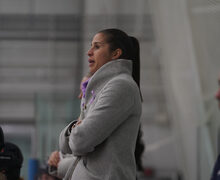Study: Female researchers are less likely to have academic research published
Kiran Ramsey | Senior Design Editor
A study recently found that men had published an average of 7.2 papers while woman averaged 5.5 percent.
Nearly 100 years after winning the right to vote in America, women are still fighting for equality in science.
A new study found that female researchers are less likely than male researchers to have their work published, a disparity with consequences for careers where publication is often equated with prestige.
The inequality in publishing habits was highlighted in a study co-authored by a group of female academics: Sarah Lubienski and Emily Miller, math professors at Indiana University and West Chester University, respectively, along with Evthokia Saclarides, a doctoral candidate at the University of Illinois.
Although previous research has illustrated differences in the number of articles published by men and women, this research demonstrated publication differences even within a population of men and women who were similar in all other aspects of their educational and professional characteristics.
“With the students having graduated from the same institution, they likely had similar qualifications and experienced similar training,” Miller said, describing the team’s finding that men had published an average of 7.2 papers while women averaged 5.5 papers.
Miller said she was surprised the discrepancy existed across multiple fields of study.
“I think we had expected this data to tell a story of STEM versus non-STEM programs,” she said. “But the differences were more widespread than that.”
This trend may be difficult to address because the reasons for its existence are unclear, Lubienski said. More attention from faculty mentors and fewer family duties were two possible explanations proposed in the study, but she said the bulk of the publication differences remain “unexplained.”
Lubienski said university administrators should work to reward faculty for publishing with female students. Academic institutions should also work to change the “culture” of publishing, she added.
Miller said women are not less motivated or capable of submitting research for publication.
“I don’t think anyone who decides to pursue a Ph.D. suffers from a lack of drive or motivation,” Miller said. “More likely, the differences stem from differences in their experiences within the program.”
The two professors say this means that without a change in the beliefs and practices of those who influence the ability of students to publish, there cannot be a long-term solution to unequal publication rates. Encouraging women to publish their research may superficially decrease the effects of this disparity, but more effort is needed to make a lasting difference.
Lubienski said the university should track patterns on their campuses, including female doctoral students’ research, mentoring and productivity. They should also look into whether women are disproportionately serving as teaching assistants, she added.
Replication of her study at other schools will also help generate more evidence that bias against women in academia continues, Lubienski said.
Miller said she worries about claims that women simply have different career aspirations than men. Some people suggest women don’t want to publish as much, she said.
But, Miller added, “whether or not those aspirations are influenced by gendered expectations is an open question.”
Published on November 28, 2017 at 11:53 pm
Contact Maizy: mtludden@syr.edu





